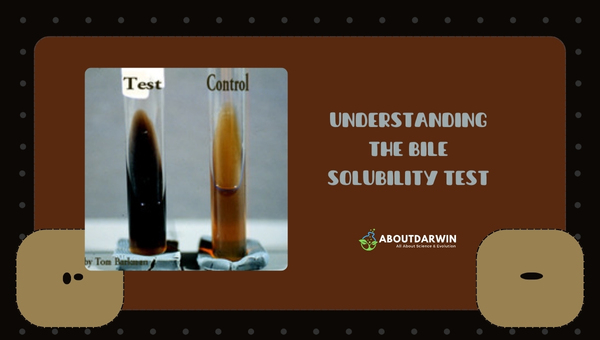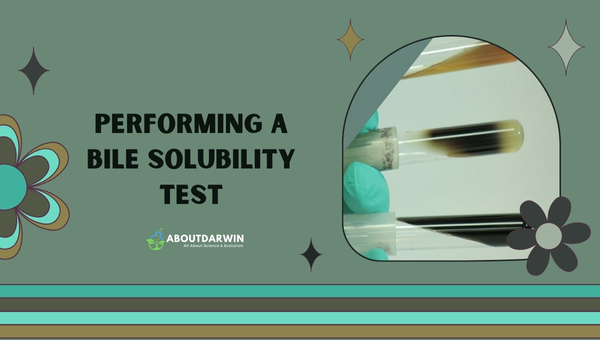Physical Address
304 North Cardinal St.
Dorchester Center, MA 02124
In the hidden, microscopic world of bacteriology, there’s a battleground – and I’m right in the middle of it. My weapon? The Bile Solubility Test. It’s a test as intriguing as its name, a fascinating fusion of science and practical knowledge with one aim – to identify specific bacteria accurately.
The Bile Solubility Test is essentially my Sherlock Holmes moment. Using this method, I can differentiate Streptococcus pneumoniae from other alpha-hemolytic streptococci strains by their ability (or lack thereof) to dissolve in bile or bile salts.
Yep, just like that, I can unmask one strain among many! It is pretty amazing when you think about it. Don’t worry; by the end of our journey today, you’ll find it just as intriguing as I do.
Contents
When it comes to the field of microbiology, the Bile Solubility Test holds a unique significance. It’s an incredibly essential tool used by scientists for differentiating and identifying distinct strains of bacteria. This powerful test applies our understanding of biochemical reactions to distinguish between Streptococcus pneumoniae and other alpha-hemolytic streptococci.

I find that understanding this is kind of like trying to find a green pebble amongst a pile of similarly colored rocks. See, all these bacteria may look identical under a microscope; they’re all gram-positive, lancet-shaped cocci, often found in pairs (diplococci).
Yet they are not the same, and distinguishing between them requires another level – bacteriology’s version of sophisticated detective work: The Bile Solubility Test.
Even though the Bile Solubility Test might seem complex at first peek, I promise you it’s not too scary once we break it down. You see, at its core, this test leans into the fascinating world of biochemistry to give us insight into bacterial identity.
The crux of the method lies in our buddy Streptococcus pneumoniae’s unique characteristic: its susceptibility to bile salts. This glorious fact makes it stand out from other alpha-hemolytic streptococci, which are not affected by the same salts.
Don’t worry if you’re feeling a tad overwhelmed; let’s bullet-point this bad boy up for clarity:
This nifty bit of biochemical trickery allows us to tell whether our test sample is home to Streptococcus pneumoniae or just some dime-a-dozen strep wannabe. Not so difficult after all!
Also Read: Sabouraud Dextrose Agar (SDA): Composition, Uses, and More
Let’s get specific about the reagents we are using in the Bile Solubility Test. Every cog in this chemistry clock has its role to play, so here’s the lowdown on our all-star cast:
This is the leading character of our tale! It operates as a detergent that can penetrate bacterial cell walls. In S. pneumoniae, it triggers autolysis by facilitating deoxyribonucleases to hydrolyze their DNA.
Like any good sidekick, our buffer helps maintain an optimal pH environment for the test to be accurate and reliable.
It acts like a stagehand setting up our scene; it’s used predominantly for making bacterial suspensions.
These include pure cultures of S. pneumoniae typically grown on blood agar plates – these are your ‘test dummies’ if you will.
All these players come together to execute one outstanding performance: differentiate Streptococcus pneumoniae from other alpha-hemolytic streptococci. So when asked who had done it? You’ll have all the evidence ready!
Performing the Bile Solubility Test doesn’t require an advanced biochemistry degree, but it does entail some procedural dexterity.

Think of it as running in a perfectly timed relay marathon, where every move is critical to a successful outcome.
Let me stress that safety comes first. Here is how you go about setting up for this test:
Now, let’s jump into the heart of the procedure itself:
Firstly, folks, take heart! Believe me; this isn’t rocket science! But like any good recipe or DIY project, ensuring you have clear steps to follow will make all the difference.
Start by transferring selected colonies using a loop into two separate tubes containing saline solution and bile solvents, respectively (consider this step creating your “subject” teams). Mix them well until fully dissolved, and try as best you can to obtain a homogenous suspension.
Next, move these mixtures from room temperature into an incubator set at body temperature (37°C) for about 15 minutes (“race time”). Let them do their thing and then compare both tubes visually (“finishing line”). Lysis or clearing of turbidity in comparison with the control tube hints at a positive bile solubility test!
Finally, remember, folks, no experiment is perfect without practice – so if things are not going as planned on the first try – just breathe – after a couple of attempts, you’ll surely nail it like a pro!
Also Read: Unlocking Cryptococcus Neoformans: Insights into Fungal Infections
Reading the results of a Bile Solubility Test may seem intimidating, but once you know what you’re looking for, it becomes as straightforward as pie.
If your Streptococcus pneumoniae bacteria have indeed dissolved completely, you’ve hit the jackpot. Why? This reaction is a positive bile solubility test result indicating the presence of Streptococcus pneumoniae in your sample.
The complete disappearance or marked reduction of turbidity on adding bile salts signifies that the bacteria’s cell wall has been disrupted and it has auto-lysed (broken down).
On the flip side, if there’s only partial (or no) dissolution of your bacterium after adding bile salts, then hold up -you’re probably not dealing with Streptococcus pneumoniae. These substances are resistant to lysis by sodium deoxycholate and its ilk — hence why they remain intact and visible to our eyes even post-experiment.
Remember, though, microbiology is precise work. Always double-check everything from lab conditions to reagent quality before drawing conclusions based on these results alone!
Bile, specifically sodium deoxycholate in our case, acts as a detergent. It initiates the process of autolysis by disrupting the cell wall of Streptococcus pneumoniae.
Just like any scientific test, there’s always a chance for discrepancies due to human error or external contamination.
This little bugger can cause quite nasty infections like pneumonia and meningitis. Swift and precise identification helps doctors fight it better!
Absolutely! Incorrect temperature control during testing or use of incorrect reagents can affect your result.
Also Read: Earth’s Geomagnetic Reversal: The Phenomenon of Polarity Flip
Ah, seems like we’ve wrapped up our deep dive into the world of Bile Solubility tests! Looking back, it’s clear to see why it holds such a key spot in microbiology.
It magnifies the disguised features of bacteria under simple steps, making the detection of Streptococcus pneumoniae straightforward. Turns out our microscopic counterparts are full of unique characteristics just waiting for us to uncover!
But you know what’s exciting? The field never stops shifting and changing! Constant innovation and development means we can look forward to even better methods for detecting and categorizing bacteria like Streptococcus pneumoniae in the future.
So, while today we’re relying on bile salts and a keen eye, who knows where technological advancements might take us next? Our journey with microbes is bound to be fascinating, so let’s keep learning together.